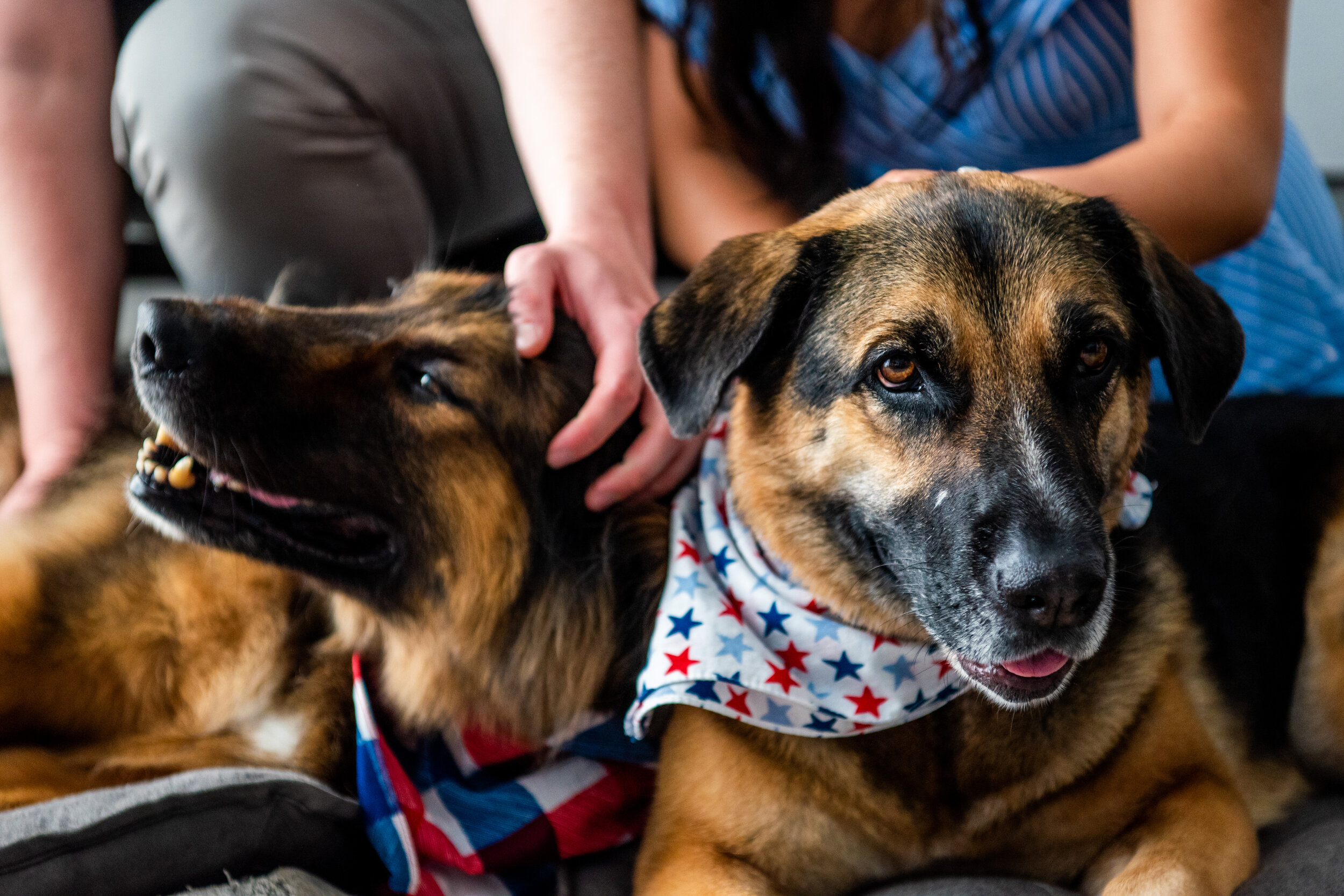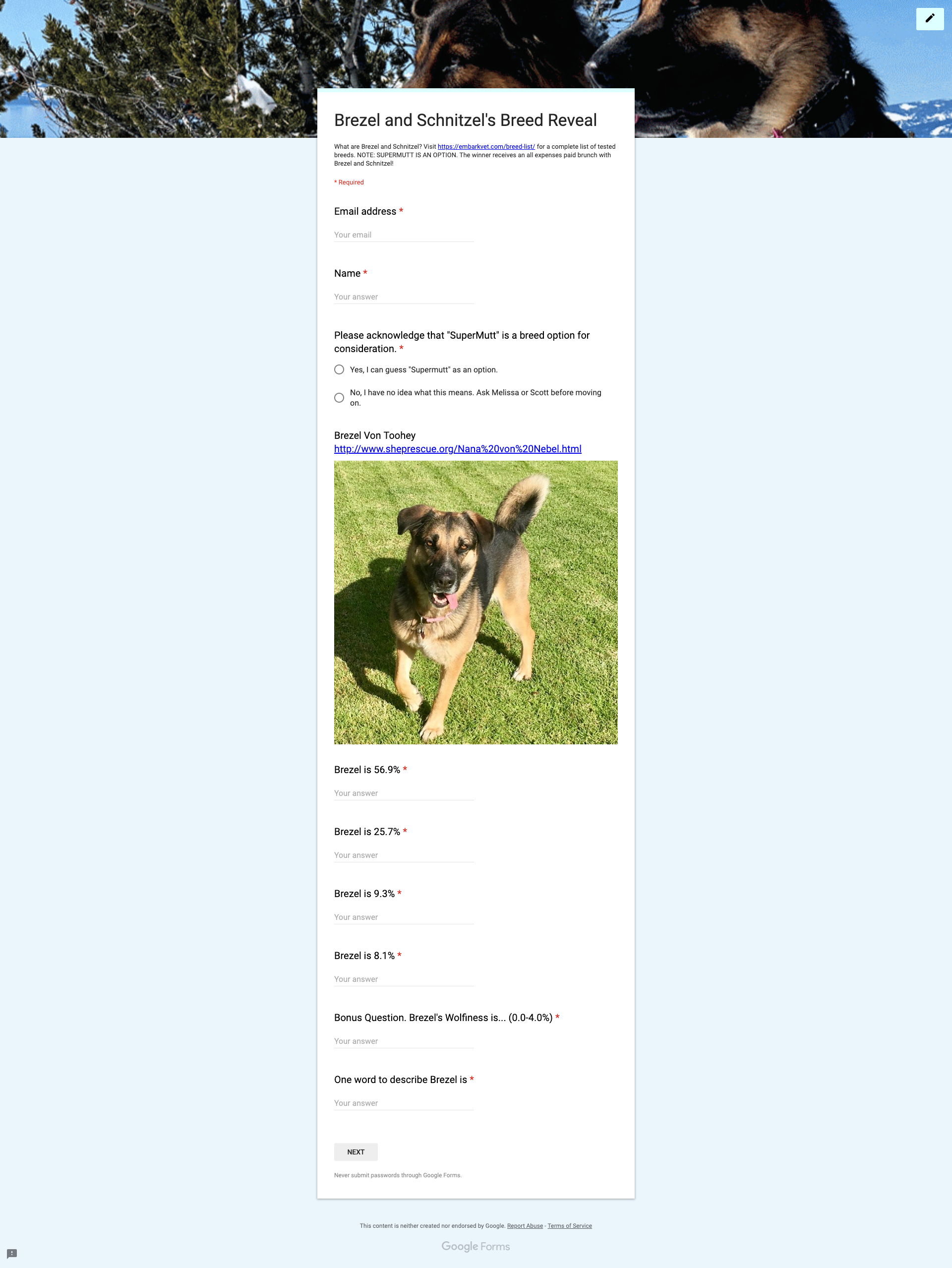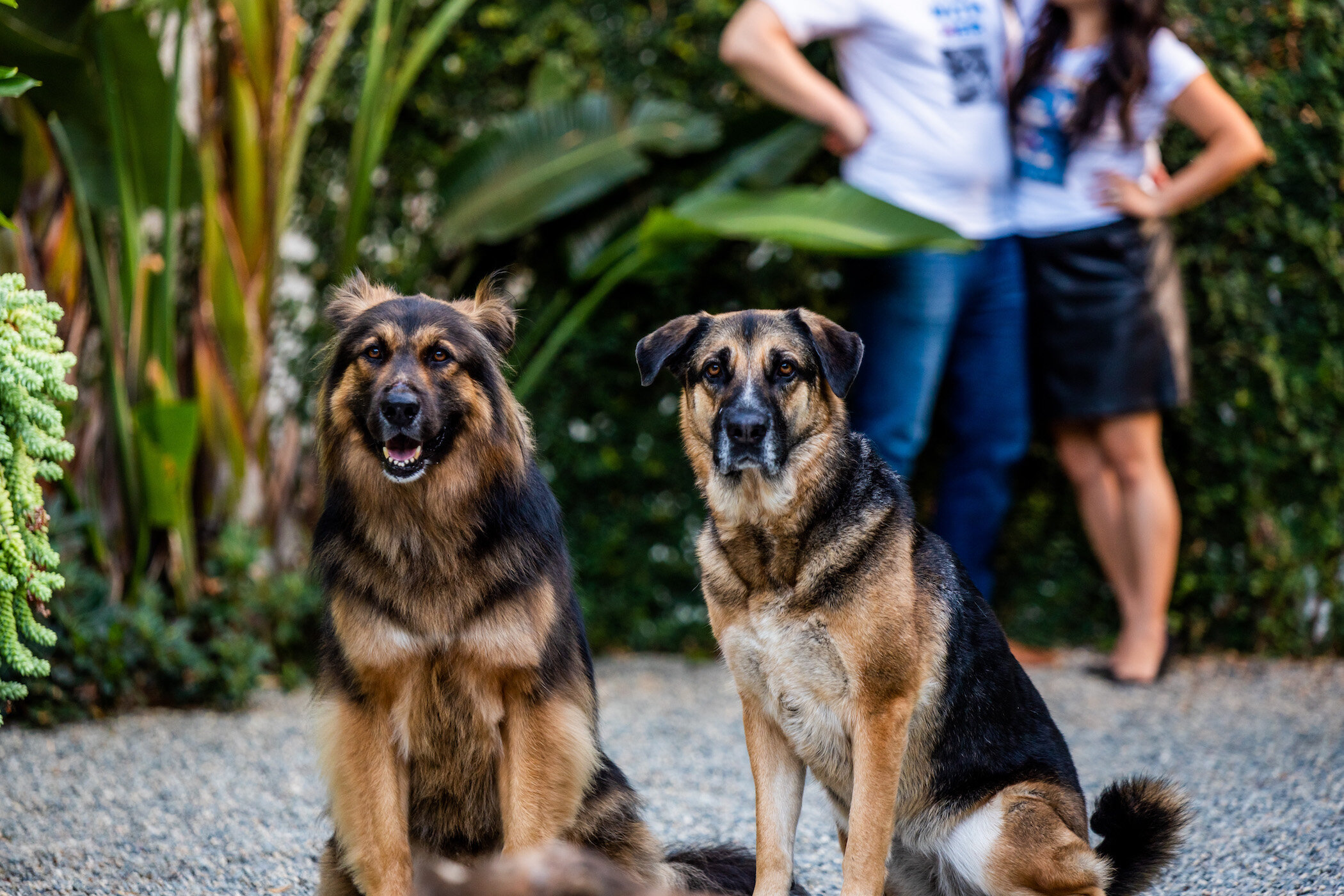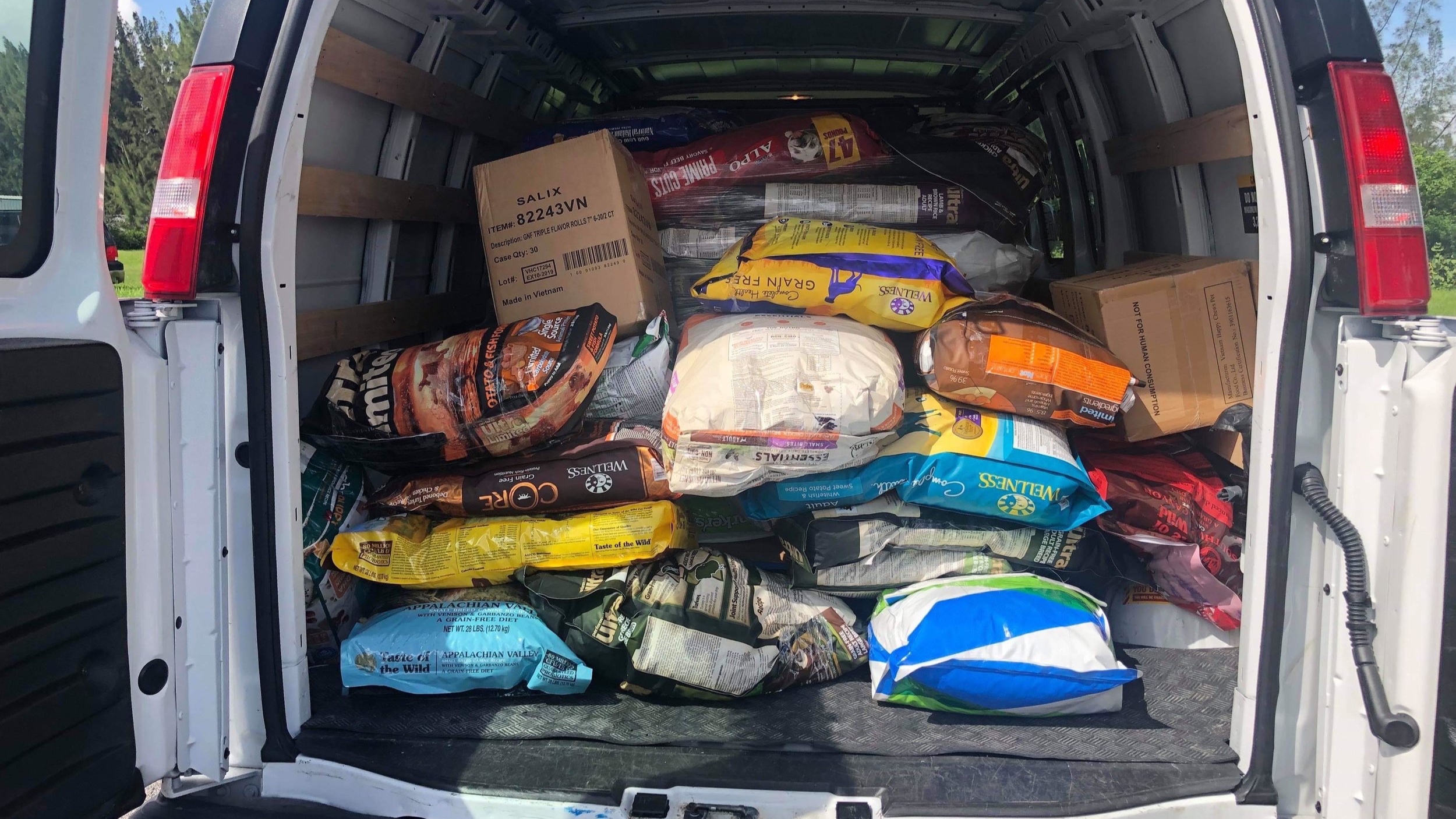Life is Better With a Dog: How to Find the Right One for You
At Kibble & Dribble, our commitment to helping people and pets starts at the very beginning of the relationship. While (puppy) love at first sight is possible - it’s usually not an indicator of success or, guarantees a fairytale ending.
The decision to get a new dog isn’t an easy one; there are many factors to consider - cost, time, breed choices, lifestyle realities, etc. Often, people turn immediately to sites like Petfinder or Craigslist, but are quickly overwhelmed or disillusioned with their choices. Rest assured that those are not the only viable options out there.
We’ve broken down the various methods of dog adoption that are available and accessible to the general public, and the pet sources you should avoid.
Pet Stores: how much is that doggie in the window?
The short answer: don’t even bother asking. Large chains like Petland have been growing in popularity, but while they may appear stylish and trendy - BUYER BEWARE. Pet store dogs are usually supplied by large breeding operations, aka puppy mills. Dogs go from mills to stores across the country via third party dog brokers, who collect a fee for supplying a steady stream of “inventory.” Female dogs kept at mills are bred over and over again, while the litters are disseminated. This video by The Dodo does a great job of explaining the realities.
Once in the care of the store personnel, pups rarely get the vaccinations and/or medical attention they need, and then go home with unsuspecting customers who often have to follow up with extensive veterinary care. Finally, when those cute puppies start to age, the clock begins to tick. It’s not easy to keep as many full-grown dogs in a store (and also, people like to see those cute puppy faces), so those dogs….. “go back.” Yikes.
Recent legislation has banned the sale of animals in certain states and requires that pet stores get their animals from shelters or rescues.
New York State Senator Michael Gianaris and Assembly member Linda Rosenthal have introduced ASPCA-supported legislation to prohibit the sale of dogs, cats and rabbits in pet stores.
My new legislation to ban the sale of dogs, cats and rabbits in pet stores statewide will finally end the puppy-mill-to-pet-store pipeline. Animals such as puppies, kittens and bunnies in mills live short, tortured existences; their offspring, usually the animals offered for sale at pet stores, are often riddled with congenital issues as a result of the poor conditions and breeding practices employed,” said bill sponsor Assembly member Rosenthal. “Unsuspecting customers pay thousands of dollars for a cute puppy or kitten, only to find that the animal is incurably sick. By ensuring that pet stores can offer only rescues for adoption, this legislation will protect consumers and help to shut down the mills. Our animal shelters and rescue organizations are overflowing with animals needing forever homes; it's time we start connecting rescue animals with loving homes through adoption in pet stores.
Public education is critical in ensuring that we slowly eradicate these inhumane forms of breeding and selling. As hard as it is to resist those cute faces in the window, every sale goes to perpetuating the cycle of cruelty. The only way to stop it is to put pet stores out of business - if the demand dwindles, so will the supply.
Breeders - the good, the bad, and the ugly
Getting a dog from a highly reputable breeder is a great option, but be prepared to do some thorough research and pay a significant price. This is fair and reasonable considering the time, effort and cost of raising healthy, well-cared for, and socialized animals. If you are not prepared to spend between $2K and $5K, examine the myriad of adoption methods. And, despite the long-held belief that purebreds are the superior choice, it doesn’t necessarily guarantee a dog’s personality type or perfect health.
If you prefer to take this route: here are a few key indicators of a quality breeder:
Transparent and welcoming: Are you allowed to visit their facility and see their dogs? If this is geographically possible for you, we highly recommend you go. If they balk or make excuses for you not to come, that’s a red flag.
Age appropriate releases: A puppy should never be released to their new owner before12 weeks of age. Additionally, if a breeder has available litters too often you know that they are overbreeding their female(s), or running a large operation for maximum profits.
Strict return policy: A good breeder will ALWAYS allow you to return a dog. No matter what. In fact, they will require it and often will ask you to sign paperwork agreeing to it.
PROS: In the best case scenario, a breeder can provide you with a gorgeous, even-tempered animal in optimal health. Jakoba German Shepherds is a good example of what you should see when researching breeders.
CONS: While highly reliable, good breeders are costly and you can be on a waiting list for several months, or even a year, so be prepared. Beyond that, the sad fact is that the majority of breeders are not great, or scrupulous. Bad and over-breeding can result in genetic and behavioral issues. Backyard breeders are known for keeping animals in horrible conditions, not doing the necessary health testing and in some cases, hoarding. Backyard breeding is responsible for the significant number of animals that find themselves in the shelter system each year.
To rescue, or not to rescue
The most common questions and concerns when it comes to rescue are: Will I get a damaged dog? An abused dog? A dog with separation anxiety or aggression issues?
You might. You also might not. The term “rescue dog” conjures up images of sick, abused or senior animals, which is sometimes the case, but in reality, the majority are just dogs that need homes and were lucky enough to go into rescue instead of a shelter. Many times the owners simply could no longer care for them due to financial hardship, an expanding family, or illness. You’ll find many bouncy, happy go lucky dogs in rescue, and you will also find “special cases.”
Much like breeders, not all rescues are created - or operate - equally. You need to do your homework and read their reviews, meet with some volunteers, and ultimately, go with your gut. Rescues routinely have adoption events that will allow you to talk with volunteers, meet a variety of dogs and ask questions. They also offer 1:1 “meet and greets” if you are interested in one in particular and a detailed assessment of that dog’s temperament and personality.
Additionally you can expect:
An application process that may include a home check. They should ask all potential adopters to fill out an application. Don’t balk at this process, they are ensuring that the animal is going to a good and safe home.
Spaying/neutering/vaccinations. They should provide you an animal who is already fixed, vaccinated, and free of fleas and ticks. They should have also tested for heart worm (if that applies to your area) and stomach worms. These are non-negotiables.
Strict return policy. Just like a breeder, a good rescue should be willing to take a dog back if you can no longer care for them.
PROS: Rescues can be wonderful resources. Often, they have their own communities of really helpful owners and volunteers who want to see you succeed. They will make themselves available for your post-adoption questions and offer training suggestions. Their fees are generally lower than than breeders, but higher than Humane Societies or city shelters. You are getting a dog that’s been assessed, medically treated and vaccinated.
CONS: Not every rescue has enough staff or resources to provide the best services. Because of this, potential adopters may get incorrect information about a dog, or have to wait while the organization slogs through multiple applications for the same dog. Furthermore, you might not always be the chosen adopter as it is up to their discretion. The Washington Post explained just how daunting this process can be.
Plot Twist: breed-specific rescues
Westside German Shepherd Rescue is a popular rescue organization based in Los Angeles, CA.
A personal favorite of mine is the breed-specific rescue. Many people don’t know these even exist! Whether you have your heart set on a Great Dane or a Goldendoodle - there’s a rescue group for that.
PROS: Volunteers are usually extremely knowledgable about that particular breed. Their community is as well and can be a wealth of helpful information. I have met some really awesome people through the rescue community, many of whom I now consider personal friends.
CONS: The population and availability of certain breeds varies dramatically around the country. The rescue you find may be out of state or might not have any available dogs that fit your criteria. Most groups will however, agree to contact you in the future and can even arrange transportation for an additional cost.
Animal Shelters and Humane Societies:
the underdogs
The sad reality is that there are hundreds of thousands of dogs in shelters across the United States. Owner surrenders, strays, criminal confiscations - you name it, the shelter gets it. The pet overpopulation is largely due to backyard breeding (see above) and owners who do not spay and neuter their pets. There are amazing purebred dogs who end up in shelters, and there are mangy street mutts. They are all deserving of a home.
PROS: Perhaps the most altruistic, cost-effective and quickest option, adopting from a shelter can take as little as an hour and cost under $100.
CONS: Often understaffed, you will get little help once you step into a shelter. It’s up to you look at dogs and try to assess their temperament or personality - a difficult task in the shelter environment. The dogs have theoretically all been seen by medical staff, however, these vists are often rushed and shelter employess can often overlook, misdiagnose or simply not treat conditions deemed too costly. If you do adopt from the shelter, we recommend that you head immediately to your own vet for a checkup and a flea and tick bath.
The Dark Web
Craigslist and Facebook Groups are popular for people looking for free or low-cost pets. While some animals are listed innocently, these sites are commonly used by backyard breeders, dog fighters and dog-nappers. Need I say more?
This Dogster article written by a trainer details some of the things to look out for, specially on Craigslist and refers to it as an “adoption agency with no standards or oversight.” Pretty accurate. Still not convinced? Here’s another horror story.
The Obsession with Puppies
I feel compelled to address this here as a side note. Puppies are humans’ collective salve for the soul. Instagram has amplified the cuteness 1000x over sending images of those round bellies and clumsy gallops all around the world instantaneously. We have fallen in puppy love, and fallen hard. But, much like babies, they are a lot of work.
Puppies are available via all the adoption methods mentioned above. HOWEVER, bringing one home requires a lot more patience and flexibilty.
Important things to keep in mind if you want a puppy and think you’re ready:
A puppy should be at least 8 weeks old. Any younger is too young to be separated from mom.
Training puppies is incredibly difficult. We’re talking house breaking (which can require you to get up several times during the night), leash walking and obedience training.
We like to joke that the number of people who can successfully train a puppy train is akin to the number of people who will successfully train for and run, a marathon. In other words, not many. You need to be realistic about what you can commit to and accomplish as you will be in training mode for a solid 6 - 12 months. It’s definitely not for the faint of heart, but it is do-able. If you have the time and dedication to attempt this, I salute you!
“Keep in mind that a dog can take anywhere from a few days to a few months to settle in to your home. Prepare to clear your schedule and stay home with them for the first few days to help them adjust to their new surroundings and minimize the chance of any bathroom accidents or destructive behavior.”
We hope this breakdown gives you better understand of your options and empowers you to make an informed decision about your personal path to pet ownership. All of these methods can be extremely rewarding, but it helps to know what you are looking for and be realistic about what you can handle.
If you’d like a deeper understanding of any of these suggestions or additional help navigating the options, reach out to us at info@kibbleanddribble.com. Or, check out our consulting service The Pawfect Match which offers hands-on help to people and families in search of their perfect dog.
How to Throw a Breed Reveal Party
The latest trend in dog ‘parenting’
We are excited to share with you a post from guest blogger Melissa Toohey, a contributing writer at LA-based LaLaScoop who handles all their pet-related content for the Doggy Doo section. Like many pet owners, Melissa and her family recently decided to buy a dog DNA test in order to obtain more information about their two rescue pups, Brezel and Schnitzel. They decided to have some fun with the answers and host a “breed reveal” party as a fundraiser for Westside German Shepherd Rescue of Los Angeles, the rescue group they adopted their dogs from. (Full disclosure: our very own “Dribble” is also a Westside alum). When I learned of Melissa’s party - and all the thought she put into it - I thought it was a really fun and entertaining way to raise money for a great cause. And, it just might inspire some of our readers to do the same!
The health screening was incredibly useful. While Brezel has no mutations in her genes, we discovered Schnitzel had a gene mutation that made potentially sensitive to certain anesthetics. This was a relief to find out, and we took comfort in knowing we could let our Vet know so they could be careful with his medical care.
With all the hype around gender reveal parties, and the continued discussion around why they are problematic, I decided to take the idea, apply it to my two fur babies, adjust it so that it went towards a good cause. Brezel and Schnitzel were rescued from Westside German Shepherd Rescue of Los Angeles and any information about their previous lives was limited. My husband, Scott, and I decided to host a “Breed Reveal” party in honor of them, and collect donations for Westside German Shepherd Rescue of Los Angeles. Our attendees had lots of fun, and the results were a shock, to say the least! Here are some tips to host a successful Breed Reveal Party:
Prior to the party, we purchased Embark Dog DNA Test. While there are a variety of tests on the market, we felt this was the best for our dogs. Since they were fully grown at the time of rescue, the health screening aspect of Embark’s product made it the best choice for us. We swabbed the dog’s cheeks and sent the samples in. Within weeks, we received an alert the results were ready. Since Scott and I wanted to take part in the guessing fun, we decided to not look at the breed results. We asked our trusted friend, Alexandra, to hold the results and help us organize the logistics for the guessing portion of the party.
We opened our party by playing a fun game. Inspired by The Office. I created dog-themed stickers; players were randomly given a sticker on their back, and were not able to look at it. Their objective was to be the first player to figure out what person/place/thing was on their sticker. They could ask three “yes” or “no” questions to each person they spoke to. The winner won a special prize.
To help attendees guess, we created a slideshow with different traits of the dogs that we thought might hint to their breeds. Some additional details of our party included Scott and I wearing custom made shirts with Brezel’s and Schnitzel’s faces on them, giving attendees “Team Brezel” and “Team Schnitzel” stickers to wear, and serving dog themed food (hot dogs, puppy chow, etc!).
We needed an easy way to have people submit their guesses. We decided to use a Google Form so that even those that could not attend the party could participate. We encouraged participation by announcing a prize - winners would be hosted to all-expenses paid brunch with Brezel and Schnitzel.
“We recognized that we would not have the love of our two dogs without the tremendous efforts of the rescue and raised over $450 in donations for Westside German Shepherd Rescue.”
South Florida Animal Rescues Provide Aid to Bahamian Neighbors
Hurricane Dorian left the Bahamas with catastrophic damage
As the news and images began coming in over social media during what would normally be a celebratory holiday weekend, it became clear that the damage caused by Hurricane Dorian would be catastrophic.
While the entire state of Florida was placed under a state of emergency and coastal residents braced for the worst themselves, they watched in horror as the Bahama Islands were pummeled by a record-breaking Category 5 storm. After a brutal 48 hours with almost no communication, the desperate pleas for help started to emerge.
As a result, many Floridians are reaching out to help. Several local animal rescues and volunteers have mobilized to begin collecting supplies to send over, as well as make arrangements to bring back surviving dogs and cats.
Bullies n Beyond, Paw Patrol and South Florida Lending Hands are all animal rescues teaming up to support the North Abaco Potcake Rescue. They started collecting on Thursday and have already received much needed supplies. The plan is to charter a flight to bring it over, but they are still waiting to hear where they can land safely.
Due to the wait, the donations need to be stored somewhere safe, and the orgs have obtained a storage facility to hold the goods until they be safely delivered. Once it’s dropped off, the plane can be filled with dogs, who will be cared for by local fosters until they can be adopted out to new homes.
“We have a cargo plane lined up (and reserved) to assist us! They will transport 2,500lbs of supplies to the Bahamas. We just need to wait till the airport gives us the green light. Flight will be departing from FLL.” - Vicki DeLuca, Bullies -n- Beyond
As of Friday, 9/6/19 the most dire supplies needed are bungee cords, battery operated fans, batteries and rubbing alchol.
Monetary donations are critical in order to ensure they can charter enough flights necessary (fuel, insurance, etc) maintain the storage unit and provide care for the incoming dogs.
You can use paypal - BulliesnBeyond@gmail.com
If you are interested in fostering one of the incoming dogs, contact BulliesnBeyond@gmail.com.
“We have been working NON-STOP to make this happen but we can’t do it alone, we need help.”




















